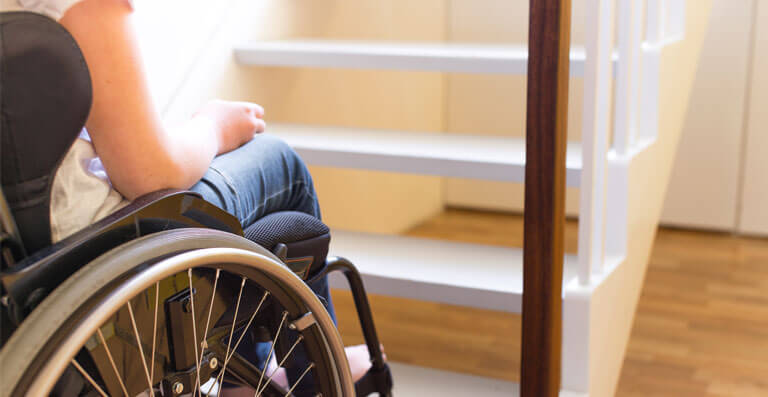Barriers within one’s home often cause frustration, and can even harbor dependence in children. While home modifications may seem excessive, they can improve a child’s quality of life and help prevent potential injuries.
Cerebral palsy comes with a number of challenges which can make it difficult for children to feel truly mobile or even comfortable in their own home. Home modifications, put simply, are alterations done within a home in order to mitigate potential injury hazards and/or circumvent barriers which limit the movement of a disabled person.
Home modifications can be structural in nature (e.g., wider doorways, lowered cabinets, ramps, handrails, chair lifts, etc.), or as simple as installing easy-to-use doorknobs, padding sharp corners, spacing out furniture, or using phone apps for home automation.
Cerebral palsy encompasses a wide range of movement and mobility disorders, and every child has unique challenges. To learn what types of home modifications and safety upgrades would work best for your child, it’s highly recommended that you consult with your child’s vocational and/or occupational therapist. These professionals are trained to analyze an individual’s home environment and recommend modifications to meet specific needs.
Here are some of the common home modifications for children with cerebral palsy:
- Adding a ramp that the child can use to circumvent steps to the the porch and/or front door.
- A lowered sink for those who rely on a wheelchair.
- Spacing out furniture within a room to make it easier for them to navigate freely.
- Moving wall sockets or light switches to make them easier to reach.
- Stair lifts or elevators to make it more convenient for them to access another floor of the house.
- The addition of handrails or grab bars in various areas of the house.
- Accessible commodes, showers, and/or walk-in bathtubs.
- The use of carpeting or non-skid flooring to help prevent falls.
- Refrigerators with sliding drawers.
- Security systems, cameras, or other devices to help parents keep an eye on their child.
Government Regulations on Housing Accessibility
It’s important for families who have a child with cerebral palsy to understand that the Department of Housing and Urban Development has laws that not only make it mandatory for homeowners to make certain types of modifications, but that government loans (as well as tax breaks) often exist to make such modifications cost-effective.
If you rent a home or apartment, the Fair Housing Amendments Act states that renters must be allowed to perform reasonable accommodations or modifications of the premises if such modifications are necessary for a person with a disability. The landlord cannot deny permission for modifications needed so that the tenant with a disability can use and enjoy his/her home.
Modifications may be made to the interior of the individual’s unit, as well as any public and common use areas of a building (e.g., lobbies, hallways, parking lots, laundry rooms). The landlord can, where reasonable, require the tenant to restore the interior of the premises to the condition it was in prior to the modification.
At the end of the day, it’s important that a child with cerebral palsy is able to use the facilities found within a home with as little stress as is possible. For more information on home modifications, see our helpful list of resources.

